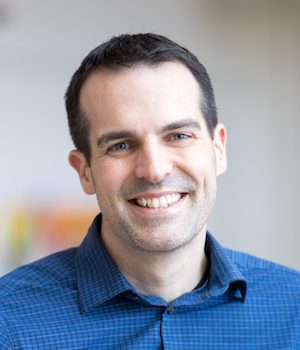Lunch @UCSF with Adam Frost – Cryo-EM comes of age
Lunch @UCSF with Adam Frost – Cryo-EM comes of age
DOWNLOADABLE GUIDE TO SUNDAY EVENTSWork in Adam Frost’s lab is connected by a common vision: to see macromolecules get together and come to life. Members of the Frost team study biomolecular machines that are too fragile to purify, too large or too flexible to crystallize, or that depend on lipids for their form and function. To derive unique insights into cell biology and human disease, the Frost group integrates atomic structure determination by cryo-electron microscopy (cryo-EM) with genetics, biochemistry, and other diverse imaging techniques.
In cryo-EM, a sample is created by placing many copies of a protein, called single particles, in an aqueous solution. The sample is plunged into liquid ethane, which cools the solution at the rate of 100,000 degrees Celsius per second, suspending the particles at myriad orientations at minus 172 degrees Celsius in a protective glassy ice.
An electron microscope is then used to image the sample and researchers feed images of the particles into computers, which combine the information from the many two-dimensional views to calculate the object’s three-dimensional structure.
Until quite recently, many structural biologists considered cryo-EM to be inherently inferior to X-ray crystallography, which in the best cases can achieve resolutions of less than two Angstroms, with some dismissing cryo-EM as “blob-ology.” But thanks to advances made at UCSF and elsewhere, cryo-EM is now revealing biological structures – such as the capsaicin receptor, involved in sensing the “heat” in chili peppers and in pain transmission – with unprecedented clarity. Cryo-EM’s star has risen so quickly that in 2015, Nature named it “Method of the Year.”
Join Frost for a lively discussion of a very (very) cool technique that is revolutionizing structural biology and advancing drug discovery.
Registration is required.

